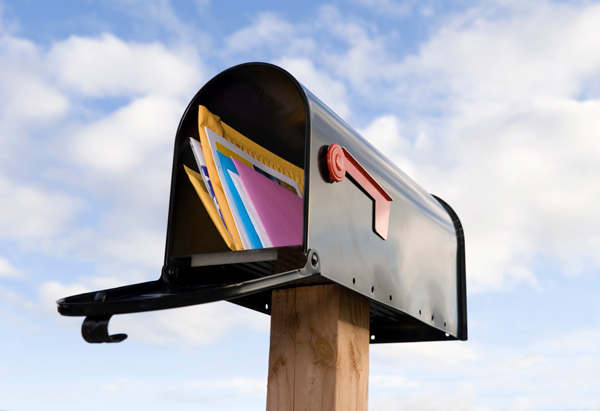You've Got Clutter: How to Organize Your Mail

Photo: Thinkstock
Every year the U.S. Postal Service delivers more than
200 billion pieces of mail—and an estimated 30 billion e-mail messages bounce
around the Internet every day. This month's project is to develop a sane,
efficient system to control the
flow.
Location Is Everything
- Always open paper mail at a designated place near your filing system (not on a train or in a doctor's waiting room). Keep a trashcan nearby, and feed it generously. Then sort whatever remains into baskets or folders by person or category (bills, invitations, magazines).
- E-mail can follow you anywhere, so be careful not to let personal correspondence eat up your workday or let business-related messages intrude too much at home (where you might not be able to respond to them anyway).
- If your e-mail system has a filter function, use it! Presort messages into folders—boss, coworkers, customers—so you can respond in order of priority.
"Just Checking" = Chaos
Casually looking at correspondence and then not dealing with it is guaranteed to create a backlog. Instead, devote 20 minutes a day to paper mail. As soon as you open it, respond, toss, or file.
E-mail is the world's best procrastination tool. How often have you been gearing up for a tough phone call and thought, 'Hmm...let me just check my e-mail first.' Stop! Resist the temptation to peek as a distraction, interrupting the flow of your work, and instead schedule 20-minute power sessions throughout the day—e.g., at 10 a.m., 2 p.m. and 5 p.m. Respond immediately to messages that can be answered in two minutes or less; set aside a specific time for those that require more thought.
What To Do With...
- A birth announcement: Write the newborn's name and birth date on your calendar, and put "Buy baby Max a gift" on your Saturday to-do list.
- A brochure for a conference you might attend: Write the event date and registration deadline in pencil on your calendar. File the brochure.
- An invite you need to consult your significant other about: File it in a folder marked "Discuss."
- A coupon for a free latte: Put it in your wallet, where you'll need it.
- Unsolicited advertising: If you aren't ready to decide, toss it. Another offer will be arriving any day.
Fight Junk Mail and Spam
- Remove your name from many national mailing lists through the Direct Marketing Association's Mail Preference Service (dmaconsumers.org).
- Additional opt-out sources can be found at the Center for Democracy and Technology, which even generates the letters for you (opt-out.cdt.org).
- Complaints about companies who ignore these requests can be filed with the Consumer Protection Association of America (consumerpro.com).
- Write, "Do not sell, rent, or trade my name" when filling out warranties, making donations, or placing catalog orders.
- Outsmart spam demons by setting up two e-mail accounts—one exclusively for corresponding with friends and family, the second for Internet activity. That way, spam will always go to your "surfing" address.
- Filtering software like Spam Inspector (spam inspector.com) automatically sends suspected junk directly into your "Deleted" folder, which you can scan quickly before trashing.
- Help put spammers out of business by reporting them to spamabuse.org.



